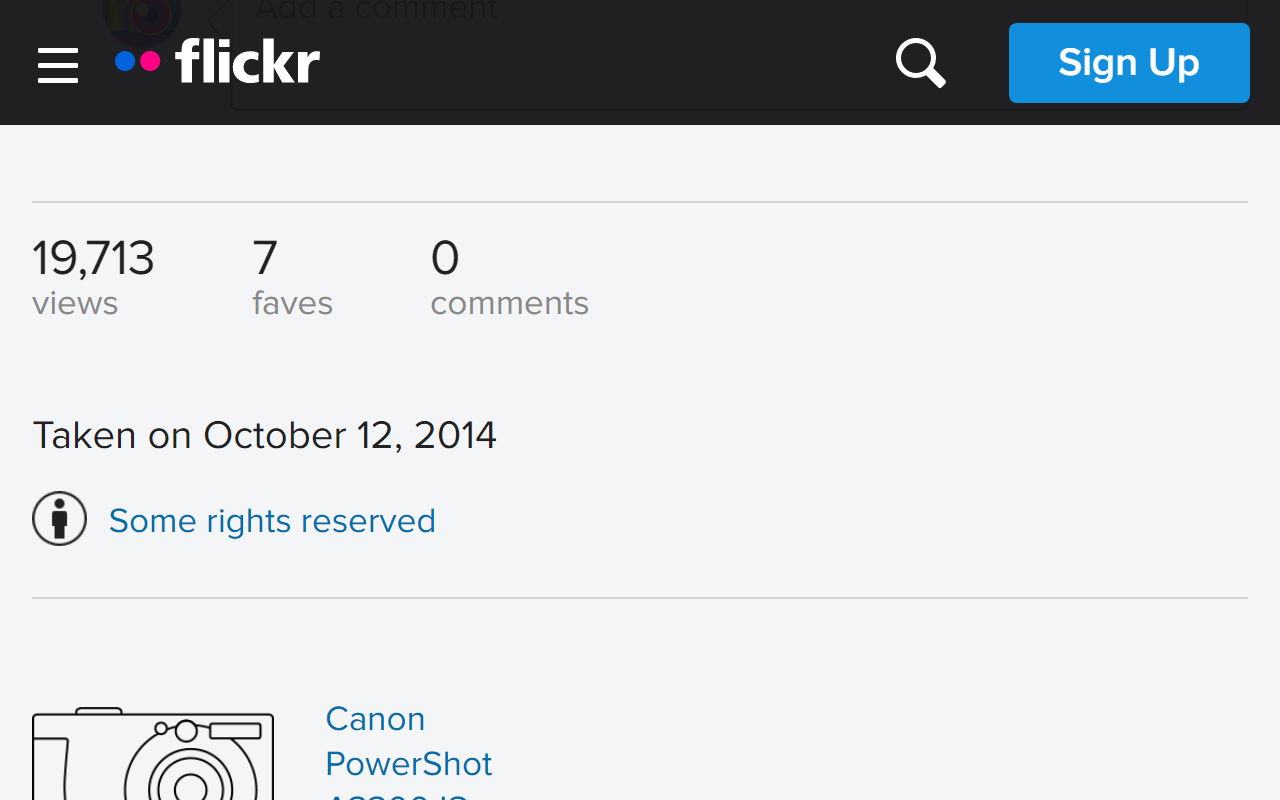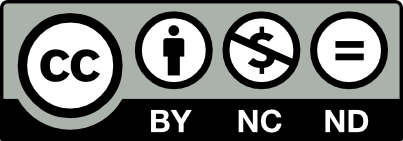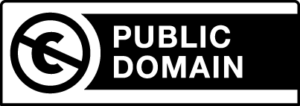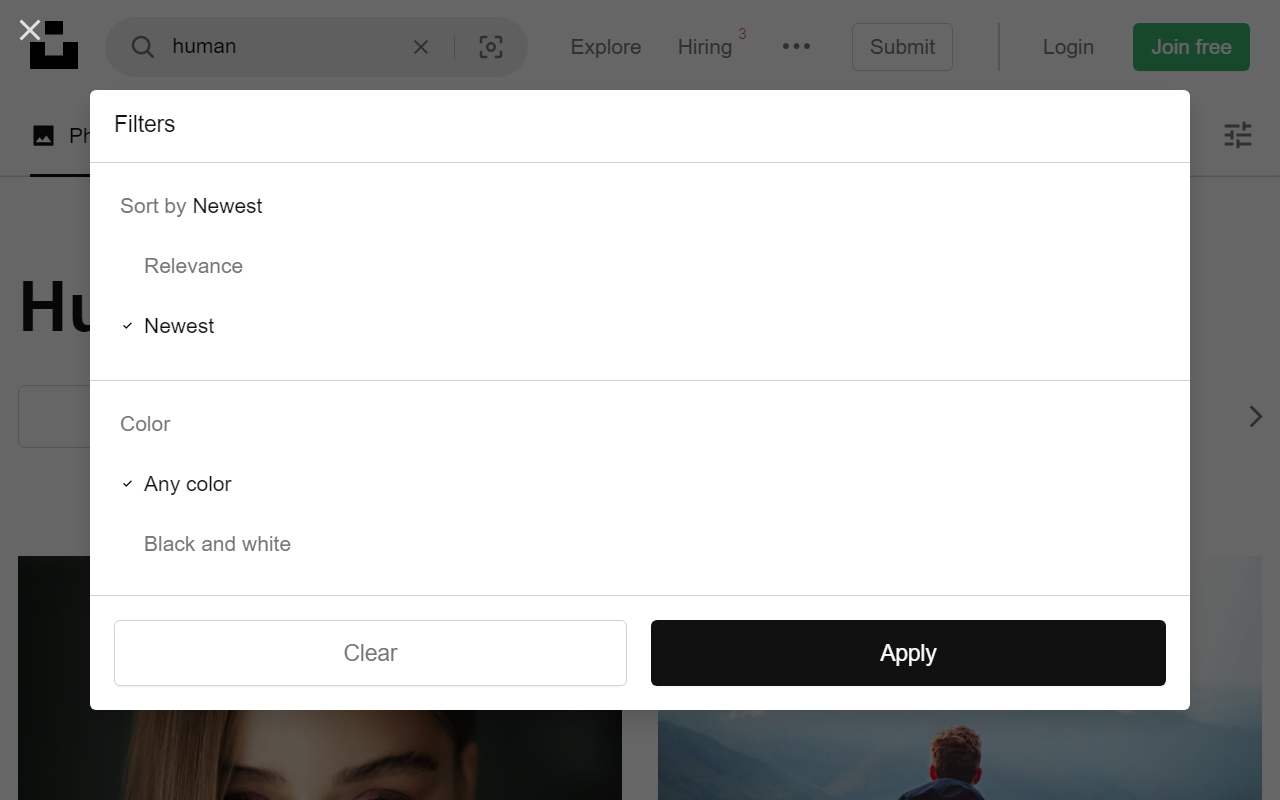Do you love free images? We do! And so do the creators who use Creative Commons images in their projects. But you might be a bit uneasy about free stuff. Did Ted Hughes not state that nothing is free and everything has to be paid for?
Some creators share their original images for free out of pure kindness, such as Beeple, aka Mike Winkelmann. He famously sold an NTF for $69 million but has primarily released most of his work under CC because, in his own words, “I think creating stuff and giving it away for free is something that just comes naturally to me for some reason.”
Today, we’ll quell any fears you may have about CC images. You learn exactly how CC licenses work. See how to attribute authors and stay out of trouble.
What Are Creative Commons Images?
We can’t talk about Creative Common images without first discussing copyright protection.
When a photographer (call him Joe) takes an image of a dog, he automatically receives the exclusive legal right to determine how the image will be printed, published, or distributed.
A copyright is automatically assigned, and it’s meant to offer protection from unfair exploitation. The exclusive right doesn’t last forever. Copyrights in the United States expire after 70 years following the death of the author. But Joe wants to share the image on his Flickr profile. He doesn’t mind if others download, copy, or share his work. They can even use it commercially. But in return, he wants the credit. His end goal is to build a large following and reputation as a good photographer.
Joe may publish his image, reserve all the rights, and require people to ask for his permission before using his work. Alternatively, he can create a license, and it’s essentially a permit to enforce his wishes.
Before December 16, 2002, Joe would have hired an attorney to create legally binding licensing agreements. Today, he can use one of the open licenses provided by Creative Commons Org. It is a non-profit organization established on January 15, 2001.
Now, this brings us to the question of what is a CC image? It’s simply an image marked with one of the six available CC licenses. They were developed to give creators legal tools to use when offering their work to the public while helping them retain certain rights.
Before moving forward, note that there is a distinction between CC images and Creative Common Zero (CC0) images. For a CC0 image, the author does not retain any rights, and their work is part of the public domain. With CC images, the author retains certain rights.
Are Creative Commons Images Free to Use?
Yes, Creative Commons (CC) Images are free to use. However, as we mentioned earlier, the CC images have different types and you should carefully check which one applies to the image you’re trying to use. We’ll go through each of them in the next paragraph.
Does anything sound confusing so far? Don’t worry. Things will become clearer when we learn about the types of CC licenses.
What Are the 6 Types of Creative Commons Licenses?
A creative Commons license is a public copyright license meant to help creators distribute their copyrighted work for free. The essence is to give other people permission to share, use or modify the original work – but following specific conditions. There are six CC licenses with different restrictions and requirements:
1. CC BY license: Attribution only

What is the CC-BY license?
The license permits copying or redistributing the original work in any medium or format and for commercial and personal uses. It only has attribution requirements.
How do you use the CC-BY images?
The image author expects you to provide attribution and mention if you made any changes after using images in your work. It’s the least restrictive CC license.
How do you provide attribution for a CC BY licensed image?
The original owner only requires proper credit or attribution. For instance, if you’re using a CC BY image on your blog, you should include the author name, source, and link to the Creative Commons license page explaining the terms.
For instance:

We found the following image by searching for “Tea” on Flickr.


And if you click on “Some rights reserved,” you’re redirected to the licensing page.

After downloading the image and uploading it here, we have to provide proper image attribution.
You can write the attribution manually or use a simple trick to generate the attribution for CC images on Flickr:
Step 1: Go to http://imagecodr.org/get.php

Step 2: Copy the image page URL and paste it into imagecodr.org.
Step 3: Click Get Code.
Step 4: You can copy the generated HTML code or attribution text.

How do you mention changes on a CC-BY license?
Under CC-BY, the author also expects you to indicate if you made changes to their original work.
Let’s execute a slight change by applying a filter. Our attribution should indicate the change:

If you made heavy modifications, you don’t need to mention every change you implemented. You can mark the work as “Derivative of [original image].
A derivative is a new creative work, but it borrows substantially from previously created work and shares similar copyrightable elements.
When attributing, link to the correct suite of licenses. That’s because Creative Commons Org releases license updates often with slight modifications. The current suite of licenses is 4.0.
2. CC BY-SA license: Attribution & ShareAlike

What is the CC-BY-SA license?
It allows you to copy, redistribute, remix, transform, and build upon the material for personal and commercial uses. It has attribution & sharealike requirements.
How do you use CC BY-SA images?
First, provide attribution and include a notice of any changes. Share-alike adds one more requirement. If we remix, transform or build upon original work, we must distribute our modifications under the same license. For instance, you may use a CC BY-SA image in a montage featuring other CC images or original works. But the new work has to be shared-alike.
You can tell if any image has “Share-alike,” requirements by looking for this icon in the license button.

3. CC BY-ND license: Attribution & No-derivatives

What is the CC BY-ND license?
The license permits copying or redistributing the original work in any medium or format. It has attribution & no-derivatives restrictions.
How do you use CC BY-ND images?
“BY” means that you need to provide attribution and indicate if the image has been altered. “ND” implies no derivatives, and you can tell if an image is marked as no-derivative by looking for the following icon:

You cannot distribute such an image after modifying or building upon it.
4. CC BY-NC license (Attribution & Noncommercial)

What is the CC BY-NC license?
This license permits you to copy, redistribute, remix, or build upon original material with attribution and non-commercial prohibitions.
How do you use CC BY-NC images?
You should provide attribution and state if changes have been made. However, the author prohibits commercial use of the image.
So, what is considered commercial use? Does using the image on a company blog qualify as commercial usage?
Creative Commons defines commercial use as using the work to gain “commercial advantage or monetary compensation.” They specify that you may be a for-profit institution using NC-licensed work and still not violate the terms. And they cannot recommend what qualifies as commercial or non-commercial use.
At the end of the day, it’s the author’s opinion that matters. They may consider the use of their work on a company blog as commercial usage. When in doubt, use images that explicitly permit commercial use.
What is the difference between CC-BY and CC BY-NC?
CC-BY only requires the user to provide attribution and notice of changes. You can use such images for personal or commercial uses. But CC BY-NC implies that the image is noncommercial.
5. CC BY-NC-SA license (Attribution, Noncommercial, & Share-Alike)

What is a CC By-NC-SA license?
The license provides users with the right to copy, redistribute, remix, transform, and build upon the original work. It has non-commercial restrictions & share-alike requirements.
How do you use CC BY-NC-SA images?
You must attribute the image and indicate if changes have been made. But you’re not allowed to use the work for commercial purposes or monetary gain.
If you create derivatives, you should redistribute the new creative works under the same terms. Ideally, with the same CC BY-NC-SA license.
6. CC BY-NC-ND license (Attribution, Non-commercial, No-Derivatives)

What is the CC-BY-ND license?
The license permits you to copy and redistribute the original material in any format or medium following non-commercial & no-derivatives restrictions.
How do you use CC-NC-ND images?
You must attribute, indicate a notice of changes, and not create derivatives. The license also has an “NC” clause, which means that you’re not allowed to use the original work commercially.
Things to note:
- While giving attribution for all licenses, don’t show that the licensor has endorsed your use, website, services, or products.
- You should not impose any legal restrictions or technological techniques to restrict others from using the image as stipulated by the license.
Can You Use Creative Commons Images in a YouTube Video?
Yes, all CC licenses allow images to be used in any format or media. That means they can be used in YouTube videos. If you’re monetizing your videos, generally avoid non-commercial CC images. Remember t0 credit the image authors in the video description. Learn more about Creative Commons from YouTube Help.
What are images in the public domain? CC0 images
Creative Commons Org offers CC0 or “No Rights Reserved” as a tool that all creators can use to mark their work. After doing so, they waiver all their rights, and others can use the work with no copyright restrictions. Did you know that you can actually find and use NFT art marked with a CC0 license in your projects?


Learn more about the Public Domain:
What Licenses Do Unsplash, Pexels, Flickr or Pixabay Use?
There is something important you should know.
That is, top image sharing websites don’t use CC licenses.
For instance, when you create an account on Pexels and upload your original copyrighted image, you grant the website “a worldwide, non-exclusive, permanently, irrevocable and royalty-free license.” Under the terms of the agreement, they have the right to reproduce, adapt, translate, modify, distribute, display, broadcast, and make the image available for other users through the service.
Anyone who downloads the image is also granted a license that allows them to copy, modify, distribute and use the content for commercial uses without crediting the content owner.
Custom open copyright licenses for image sharing platforms also have restrictions.
For instance, Pexels does not allow users to sell copies of Pexels Content without modifying it in a way that incorporates new creative elements. Similarly, the license prohibits someone from using their content to create a similar service. For instance, Unsplash can’t copy content from Pexels.
Unsplash also makes images freely available under their custom license after famously moving from offering CC images. Their license permits the use of images for any purpose and without permission. They specify that photos cannot be sold without significant modification or used to replicate a competing service.
Similarly, Pixabay’s license allows users to use images uploaded to Pixabay for free for commercial use and non-commercial use and does not make it mandatory to credit the creator.
Flickr is one of the top image-sharing sites that still allows users to mark their work under the Creative Commons Licences.
So the point is, CC-licensed images are distinct from free images with no attribution and no permission.
Can You Use Creative Commons Images for Commercial Use?
Yes, Etsy sellers are famous for selling prints and digital files of art in the public domain (CC0).
People buy digital CC0 files? Yes, while an image may be stored in a public domain archive, not everyone has the time to filter the good stuff. So, a seller may catalog the best content and sell it as a digital collection.
Similarly, you can even sell Creative Commons images marked for commercial use but respect the author’s wishes. If they ask for attribution, find a way to provide it.
As we have noted, selling photos from sites such as Unsplash or Pexels is not permitted unless you make major modifications to it.
There are more risks of using CC0 and free images.
Is it always safe to use free or CC images of identifiable people for commercial purposes?
You’re deemed to use a photo for commercial purposes when it’s used for advertising or promotional purposes (to sell something)
Using a free image or CC image commercially may be problematic if it includes:
- Trademarks, logos, or branding;
- Recognizable images of people;
- Other copyrighted work such as art or words in a photograph.
Okay, but what about the numerous free and CC0 images that have recognizable people. Should I not use them?
When the photographer takes the photograph of a subject, they should seek permission from the person and have them sign a release form.
This will permit them to use or approve the photo for commercial purposes.
People often get angry and sue when they discover that their photo has been exploited for commercial reasons without their permission.
Similarly, a company like Apple may object to the use of a CC image featuring their logo for commercial purposes or in a way that shows they have endorsed you.
Some properties are protected too! For instance, you can’t sell or publish night photographs of the Eiffel Tower without permission. That’s because the lighting used at night is a separate work of art protected by Copyright.
Do image sites provide protection against legal suits?
Image sites are aware of legal challenges that may arise by the use of images on their platform.
For instance, when you use an image from Unsplash or Pexels, you must agree to the terms of service. If you read them, you’ll come across the indemnity notice. It usually states that you are solely responsible for using the service and agreed to exempt the service from legal liability for any claims that may be brought about by your use of the service.
Paid image sites such as Shutterstock offer enhanced legal protection. They may agree to cater for legal fees if their customer uses a paid image and gets sued.
When is it safe to use free identifiable images in adverts or promotions?
The important requirement is that the subject must have given their explicit permission.
Some identifiable images on Unsplash or Pexels feature the photographer or uploader as the main subject. It may be assumed that they consented for their image to be used in adverts or promotions.
You can also verify that the model release was signed by anyone who can be easily identified in the photo.
Alternatively, consider purchasing identifiable images from paid sites and ensure that they provide legal indemnification.
Can a Creative Commons Licence be Revoked?
What happens if a photographer shares an image under CC-BY (attribution) but later decides to change the license to restrict commercial usage?
Well, it’s within their right to stop distributing their work under the CC license and even change the terms.
But they can’t revoke the license from people who already have it. For instance, if you’re using the image commercially before the change, you can still continue using it.
Can you remove something from the public domain?
By entering anything into the public domain, you relinquish all rights. Currently, only Congress has the right to remove works from the public domain.
To re-emphasize: work may be in the public domain but still require special permission for various uses, for instance, when using a CC0 image with a trademark or logo.
How to Find Great Creative Commons Images for Your Blog?
Are you looking for CC images in particular? Flickr, Wikimedia Commons, and CC Search are the best places to check.
Let’s start with Flickr, which is home to tens of billions of photos, one of the largest source of free images out there. You can sign up for a free account or start searching for images.
The site offers advanced filtering options. You can filter images by color code or license type.

Wikipedia Commons boasts of a collection of 73 million free reusable media files, including images, sounds, and videos. Here is a link to their main webpage: https://commons.wikimedia.org/wiki/Main_Page

After clicking on an image, the site launches a side panel with all the file details, including the license type.

CC search is another great place to find content and boasts of over 500 million images. The tool is provided by creativecommons.org.

You can use the filter tool to find images based on the file type, aspect ratio, image size, source, and license type.
Here is a list of more resources for images licensed under CC and custom open licenses:
- Picjumbo
- Stocksnap
- Dreamstime
- SplitsShire
- Freepik
- Pixabay
- Unsplash
- Gratisography
- Getrefe
- Jay Mantri
- Picography
- New Old Stock
- Little Visuals
- MorgueFile
- IM Free
- Superfamous
- Thinkstock: Free Image of the Week
- Yale University Art Gallery
- U.S. Department of Agriculture Image Gallery
- The Public Domain Review
- National Gallery of Art (U.S.)
- NASA
- Death to the Stock Photo
How Can I Find CC Images and Free Images More Efficiently?
There is an abundance of free images that you can incorporate into your projects. A common problem when finding images on image discovery websites is that a single image may be overused.
When finding images on Unsplash, Pexels, or Pixabay, you can avoid overused images by filtering for recently added items.

Consider using a tool that lets you search multiple databases simultaneously because the platforms often have unique images, and you may waste a lot of time navigating from one website to another.
ImageSuggest can help. Our free tool brings you image suggestions from the top three image-sharing sites. The AI-powered image suggestions are based on your content, helping you cut on manual searches. You can use the service through the online user portal or try out the Google Docs add-on. One of the best features of the add-on is the ability to highlight parts of the text and get image suggestions.
Do Creative Commons Images Need to Be Cited?
It’s good practice to give the original author credit. In part, you’re showing your indebtedness and gratitude. You should also adhere to open copyright requirements.
Professional photographers often share their work using CC licenses that require attribution for their work to be seen by a larger audience. A link back to their collection also means more exposure, which can lead to plenty of opportunities. They scratch your back, so you should also scratch theirs.
The most important elements you should include when providing attribution are:
- Title of the work – Note that it’s not always provided.
- Author name – Sometimes, it can be multiple persons, or the artist may be using a pseudonym.
- License information – Note the CC-licensed used to include a link to the explainer page. By having the link to the license info, other users can learn how to use the work. Also, note the license series (2.0, 3.0, or 4.0)
- Source – Include a link to the website where you found the image or author’s profile.
- Buy them a free coffee – Sites like Pixabay allow you to donate to the image author. Or you can follow them on social media.
You don’t have to write the attribution text manually. Often, when you download the image, the site will generate the attribution. You just need to copy and paste it.
How Do You Cite Creative Images in MLA?
Citing a source is often used in academic settings for reference purposes. Two of the most commonly used citing formats include APA and MLA.
According to the University At Buffalo University Libraries, you should use the following format for attributing in an image used in a digital composition in MLA: “Title of the image” by “Author” licensed under “License number.”
The MLA formatting and style guideline 8.0 doesn’t go into detail about citing Creative Common images in traditional papers. You can consult your instructor for additional assistance.
How do you cite creative images in APA?
According to APA, if the image license requires no attribution, don’t provide it. In an APA-Style paper, you should attribute an image as follows:
- Provide the figure number and title.
- For the figure note, include the title, author, date, website, URL, and CC license.
Figure 1
Denali National Park
Note. From Autumn 2018 in Denali [Photograph], by Denali National Park and Preserve, 2018, Flickr
(https://www.flickr.com/photos/denalinps/44152515265/). CC BY 2.0.
You should also provide a list entry in the format: Author, publication year, title, description in brackets, and source.
“Denali National Park and Preserve. (2018). From Autumn 2018 in Denali [Photograph]. Flickr. https://www.flickr.com/photos/denalinps/44152515265/”
Learn more about citing images in APA.
The Bottom Line
We have started by defining the various licenses provided by Creative Commons Org. There are six licenses (CC-BY, CC BY-SA, CC BY-ND, CC BY-NC, CC BY-NC-SA, and CC BY-NC-ND). All images published under these licenses required attribution. Similarly, an artist can choose to relinquish all the rights and make their work part of the public domain.
You have seen that image-discovery websites use their custom open licenses. Additionally, there are risks when using images that bear trademarks, logos, identifiable persons, or protected art without permission.
The article has also covered the proper way to attribute images. The most critical elements to include are the title, author name, CC license with a link, and source.
Blog publishers should find great images that are not overused. You can try searching for the recently-added images or use our AI-powered image search add-on for Google Docs for custom recommendations.




